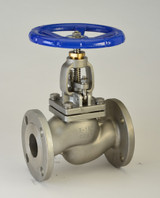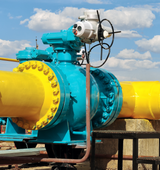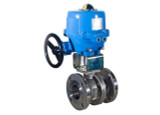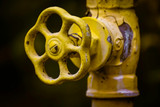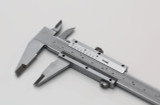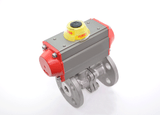What Is a Swing Check Valve?
Swing check valves are valves that will either block reverse flow or allow forward flow in a piping system. The term "swing" refers to the action of the plug--in this case, a flap (usually a disk)--that swings on a hinge. The assembly is sometimes referred to as a "clapper."
Swing check valves normally operate without any external intervention from people or motors--they rely on the flow. They are used extensively in various piping systems that move liquids, gases, steam, condensates, and even air.

Cracking Pressure
In order for a swing check valve to work, it must utilize a minimum upstream pressure strong enough to move the flap. This is known as the "cracking pressure." The size and styles of check valves revolve around this measurement.
The greater the flow rate, the further the flap will swing open on its hinge. Most check valves are considered fully open at around 85 degrees.
So, How Does A Swing Check Valve Work?
The purpose of a check valve is to prevent backflow. Backflow is a reversal of fluid travel. Swing check valves are in-line check valves used in all-size applications, but they are often used for large-diameter applications. So, how does it work?
The pressure and flow of the fluid hold the valve open, just as it will hold the valve in a closed position against a seal in the case of back pressure. A toilet works on basically the same principle. As water fills the tank, it pushes the seal closed and holds it there until you flush the toilet again. The only difference is that a toilet has an external actuator (the flush handle), while swing check valves don’t.
A swing check valve can be mounted horizontally or vertically if the flow is coming from the bottom. However, the vertical orientation will cause a higher cracking pressure due to the weight of the flap. Additionally, if you do mount a swing check valve in a vertical position, the flow must always travel upwards.
Common Applications for Swing Check Valves
Check valves are common in any piping system, especially those that incorporate any kind of pump. Swing check valves may consist of a variety of different materials. Typically, in industrial applications, the valve body consists of stainless steel, cast steel, or carbon steel. These substances are a lot tougher and can handle a broader array of conditions.
These applications are the kind found in water distribution or sewage treatment facilities. Swing check valves are also very common in the oil and chemical refining industries and related applications. Diameters of swing check valves can exceed 2 ft across or more, depending on the amount of flow, flow pressure, as well as backflow pressure.
The simplicity of the self-automated swing check valve makes it a frequent part of any piping system--domestic, commercial, or industrial--that moves fluids via a pump. This list would include cooling towers, boilers, and HVAC units--places where preventing backflow is needed.
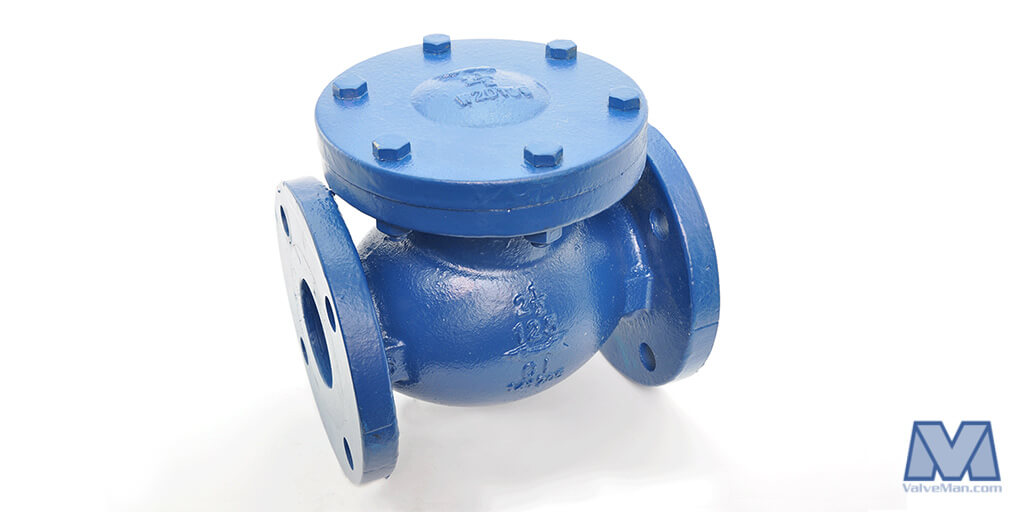
Swing Check Valves: Misunderstood, But Simple
When something fails in a piping system, the check valve is often blamed, though it is highly unlikely that it is at fault. Swing check valves are practically foolproof. When matched correctly– meaning matched to the amount of flow pressure rather than a piping system's diameter-- a swing check valve will provide maintenance-free service for a very long time.
Trouble-free service comes with proper installation and application, which means there will be no disk "flutter." Flutter happens when the valve is not matched properly to the flow rate, and backflow is allowed to pass.
Another potential issue that you may encounter is that things sometimes get stuck in these check valves. This can become a major problem, as anything stuck in the check valve will prevent it from functioning properly.
Swing Check Valve FAQs
What is the problem with swing check valves?
Swing check valves are an excellent addition to many kinds of systems. However, they're also subject to a wide range of different problems. These include the following:
- Chattering disc swings
- Slamming
- Erosion
- Cavitation
- Seat tapping
- Water hammer
- Wear and tear
What's the difference between a check valve and a swing check valve?
Rather than being two entirely individual types of valves, a swing check valve is merely a specific type of check valve. It differs from other check valves in that this check valve has a swing or hinged disc, which can only open in one direction.
Like other check valves, a check valve of the swing type allows flow in one direction but slams shut in the face of reverse flow. This ensures that there will be no backflow. Spring check valves are a worthy candidate for comparison. They also prevent backflow through the use of a spring-loaded flap or disc.
Where should a swing check valve be installed?
You should install swing-type check valves wherever there is a risk of reverse flow that can contaminate the transported media or damage parts of the system. They can be installed horizontally as well as vertically, as long as there is upward flow on vertical installations.
Is a swing check valve the same as a backflow preventer?
While both swing check valves and backflow preventers block reverse flow, these two valves are not the same. Both are automatic valves that prevent upstream flow, but backflow preventers create a stronger, more trustworthy seal, making them more appropriate for drinking water systems.
Swing check valve operation is also trustworthy, but less so. This makes them better suited to non-potable water sources or those with minimal risk of contamination.
Which is better: swing or spring check valve?
Spring check valve and swing-type check valves both offer great versatility. Swing check valve operation relies on water pressure to push the flap or disc against the valve seat.
On the other hand, a spring-loaded check valve has mechanical energy behind it. The spring will reliably push the flap or disc up against the valve seat, even if there's no pressure behind the flap.
This means that the flow stops as soon as there's no pressure in the appropriate flow direction. That said, either of these check valve types works well for most standard applications.
Can a Swing Check Valve Be Installed in any Position?
You can install the valve body for a swing check valve in either a vertical or horizontal position. However, these valves may encounter a wide array of problems if installed in a vertical position. And, when using them vertically, they're only effective if the flow comes from below. Even so, the valve disc may tap against the valve seat, leading to a water hammer. Consequently, it's much better to install the valve body in a horizontal position.
Where to Buy
If you are in the market for swing check valves of any kind, be sure that you contact us first. We are ValveMan, your premier online valve store, and we've been selling swing check valves for over 50 years. In fact, all we sell are valves. It's simply what we do, and we do it better than anyone else. So, get your swing check valve here today!
Our Posts
View AllPneumatic Actuators Valve Types
Have you ever stopped to think about what makes an automated assembly line push, pull, lift, and rot …
Read More-320°F Liquid Nitrogen Cryogenic Control Valve Setup
Need a valve that can handle -320°F liquid nitrogen without freezing up — and still control flow? He …
Read MoreWhy Fall is the Perfect Time for Valve Maintenance (And What Happens If You Wait)
We're well into fall now, which means it's time for that conversation nobody wants to have: winter p …
Read MoreFrom the DMZ to Bonomi: Rick Wentzel’s Valve Legacy
In the inaugural episode of the Fully Open podcast, host Gil Welsford sits down with Rick Wentzel of …
Read More
Check Valve vs Backflow Preventer Comparison | ValveMan
If you need to make sure that fluid in your pipe system flows in one direction only, and prevent rev …
Read MoreDifferent Types of Gas Shut Off Valves | ValveMan
Whether you're upgrading your residential gas system, looking for the best gas shut off valve for yo …
Read MoreGlobe Valve vs Ball Valve Comparison Guide | ValveMan
Valves are widely used in industrial and manufacturing facilities, but they’re also used in utilitie …
Read MoreNEMA Ratings Explained | ValveMan
Have you ever wondered what that little NEMA number on your electric actuator meant? Or perhaps, you …
Read MoreGate Valve vs Ball Valve Comparison Guide | ValveMan
Valves are widely used in industrial and manufacturing facilities, but they’re also used in utilitie …
Read MoreValve Inspection - Main Points of Valve Inspection and Testing in Manufacturing Settings
Industrial facilities rely on different types of valves (such as gate valves, check valves and ball …
Read MoreCan Ball Valves Be Used For Flow Control?
Ball valves are widely used in plumbing and piping systems, in fact, they are one of the most common …
Read MoreIntroducing Bonomi Valves
The Bonomi Group is a leader in industrial sectors including oil and gas, hydraulics, heating and en …
Read MoreUnderstanding Valve Actuators: Manual, Electric, Pneumatic and Hydraulic
Are you a beginner new to the valve world, ready to learn more about the various types of valve actu …
Read More3 Check Valve Mistakes to Avoid
So, you’re looking for a check valve, but you’re not sure if there’s any pitfalls to look out for? O …
Read MoreTypes of Valves in Plumbing
Have you ever wondered what goes into managing the flow of water in your home, or through a building …
Read MoreIntroducing Apollo Valves
Apollo Valves® inventory includes a wide range of valve products supplied to diverse markets. These …
Read MoreTypes of Water Valves
We all know that valves play a crucial role in regulating the flow of liquids and gasses in a broad …
Read MoreUnderstanding Valve Sizes and Measurement
Sizing the appropriate valve is critical to ensuring the performance of your system. Whether you'r …
Read MoreBall Valve Types and Applications
Ball valves are important components in a vast range of systems, from small family-owned workshops t …
Read MoreWhat is a Backflow Preventer, and How Does it Work?
When a simple check valve is inadequate for the job, you need a backflow preventer. But knowing you …
Read More
 888-825-8800
888-825-8800












